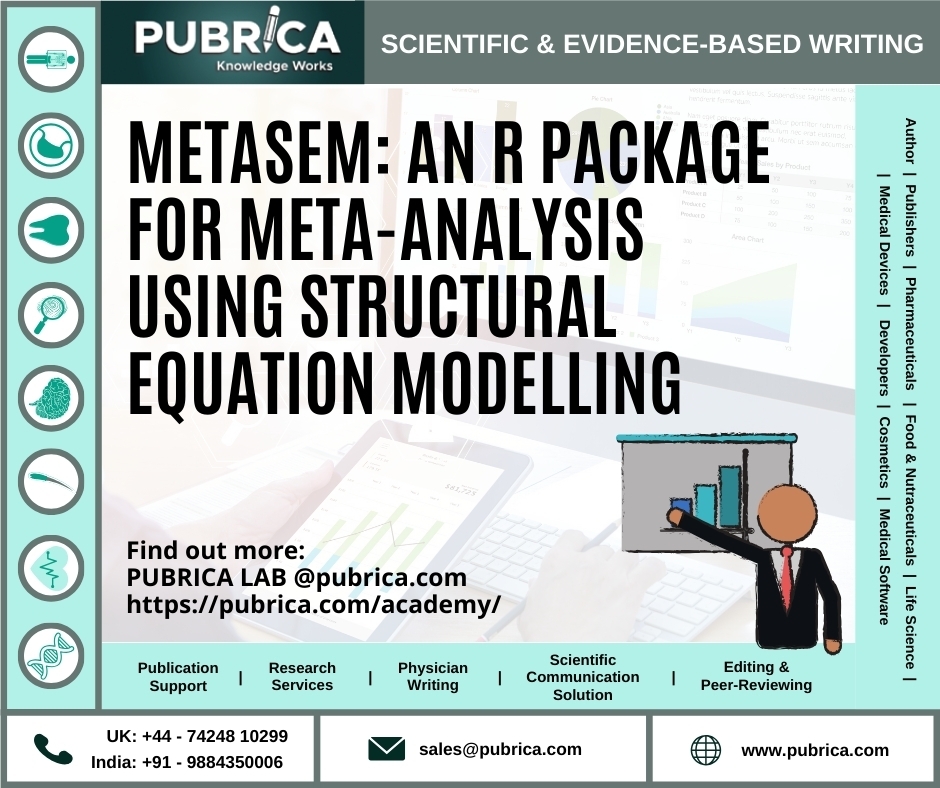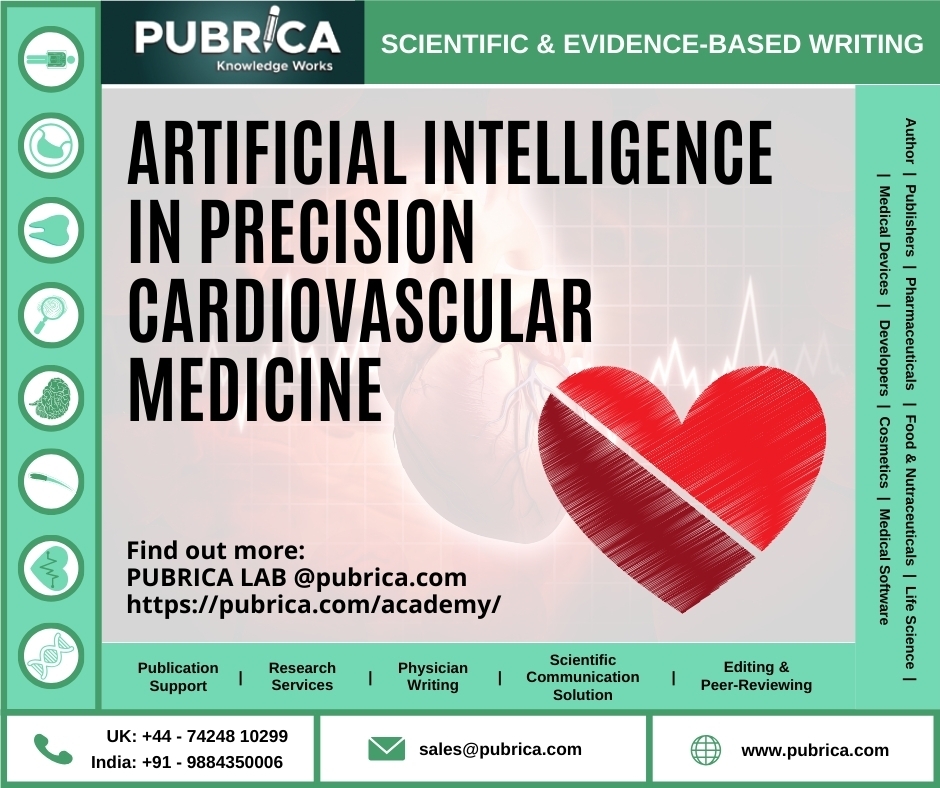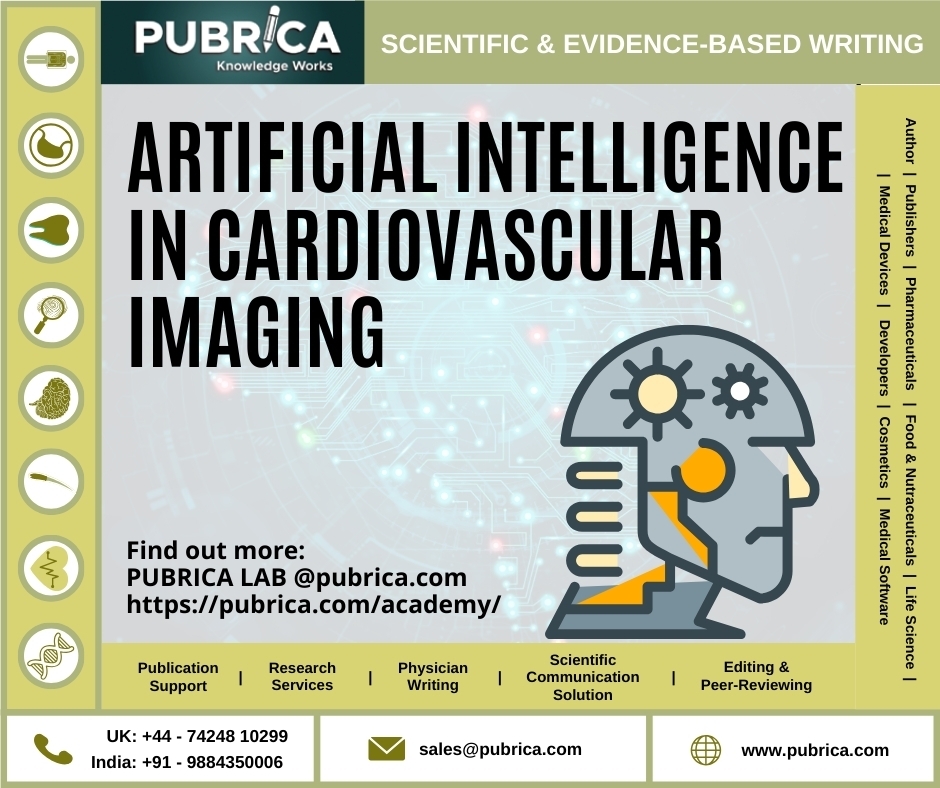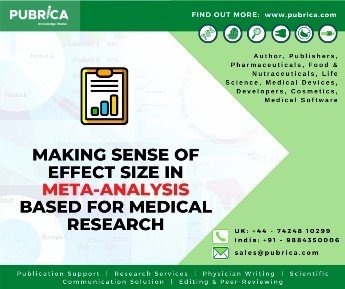
Metasem: An R Package For Meta-Analysis Using Structural Equation Modelling
February 5, 2020
Artificial Intelligence In Precision Cardiovascular Medicine
February 11, 2020In Brief
- Cardiovascular disease continues to be the world’s most common cause of morbidity and mortality.
- The importance of artificial intelligence methods including cognitive computing, deep learning, and machine learning, show their uses in cardiology.
- The incorporation into daily decision-making of artificial intelligence tools in the field of cardiology will improve care.
- Artificial intelligence is showing great promise in the field of cardiovascular imaging.
Cardiovascular disease continues to be the world’s most common cause of morbidity and mortality, and is therefore a major focus for medical imaging and medical research. Notwithstanding continuous advances in modalities of cardiac imaging, including cardiac computed tomography, cardiovascular magnetic resonance and echocardiography, the heart remains a challenging organ to photograph, particularly because of its perpetual motion(de Marvao et al., 2020). Artificial intelligence (AI) defines a computational program capable of performing tasks which are typical human intelligence characteristics including problem solving, sound, recognizing objects, understanding language, planning and pattern identification and recognition. Practically AI described as a device or machine ability to make decisions autonomously based on it received data.
There are four main areas of IA implementation including 1. Computer-aided detection 2. Quantitative analysis tools 3. Clinical decision support and 4. Computer-aided diagnosis.In medical field, the AI used for choose the best treatment option, new disease identification, being used to forecast a possible diagnosis, etc. (Darcy et al., 2016) and (Dey et al., 2019). In the management of cardiovascular disease, the cardiovascular imaging is paying an important role. When new imaging techniques are being continually implemented this has only been reinforced.
More and more studies in cardiac imaging are being carried out each year. This is informed by various factors such as increased imaging recognition, which has played an incremental role in the monitoring, management and diagnosis of patient outcomes over the years. Furthermore, imaging was broader accessible, and not only has the imaging equipment become more accurate, but also cheaper and faster. The improved interpretability and quality of imaging studies not only resulted in increased patient satisfaction, but could also lead to enhanced legal and clinical reassurance for the doctor.
From an economic point of view, the global rise in costs of healthcare is partly related to the imaging units enhancing number in the hospital and hence the enhanced number of imaging studies carried out (Papanicolas et al., 2018). The extension of imaging techniques and subsequent analyzes nevertheless exceeds the average imaging specialist’s efficiency limits. The solution for the systematic assessment of the rising number of medical images is medical artificial intelligence (AI). The smart computers using AI can provide assistance and guidance during image evaluation and acquisition has begun to show scientific literatures. This may have influences significantly on the workload of the physician (Siegersma et al., 2019).
The incorporation of various AI technologies will support cardiac imaging. Physicians will then be able to concentrate on activities best accomplished by human intelligence without being disturbed by tasks that can be automated. This can lead to improved health equality, improved healthcare delivery quality, improved patient-physician relationships, higher job satisfaction for physicians and access to healthcare while limiting the unsustainable increase in healthcare expenditure in an aging population.
Artificial intelligence (AI) use of cardiovascular imaging
Echocardiography
The most commonly used modality of imaging in cardiology is echocardiography. AI will help to reduce user reliance in a more systematic study of echocardiographic images. The ability to help analysis echo images has already been demonstrated, enables the generation of important cardiac variables on – the-fly with automated echocardiographic view classification (Siegersma et al., 2019).
Computed tomography
In the last decade, Cardiac CT has made a leap forward with an emphasis on the visualization of stenosis in the coronary tree, coronary calcification, plaque characteristics and scoring and, more recently, flow modeling. Automated noise reduction is exciting prospects for AI in CT; while preserving optimum quality of image and minimizing invasive coronary angiography (ICA) for severe stenosis determination (Wolterink et al., 2017).
Magnetic resonance imaging
Cardiac MRI is an area in which many parts of the heart are imaged including myocardial characterization, perfusion imaging, flow imaging, contractile function and anatomical imaging. Nevertheless, considering the many possibilities provided by cardiac MRI for AI applications and technology methods employed in MRI, radiographers with expertise and physics knowledge and cardiac anatomy is central to the processing and study of images. The accuracy of cardiac MR images is therefore not only dependent on the customer but also dependent on the scanner, patient and vendor(Ferreira et al., 2014).
Key features
- Missed diagnoses, efficiency problems and timing problems found at all imaging chain stages. AI technology will maximize performance and decrease costs at all levels of decision-making, interpretation and image acquisition.
- “Big data” from imaging will interface with high data volumes from the pathology and electronic health record to provide new opportunities and insights to personalizing treatment.
- Image interpretation, diagnostic support and disease phenotyping is the main areas of AI for imaging. Cluster review of applicable imaging and clinical knowledge can provide opportunities to better identify disease. Automatic measurements and automatic image segmentation will provide the diagnostic support. Initial steps toward automatic image analysis and acquisition are being taken.
Conclusion
AI technologies like cognitive computing, deep learning and machine learning are exciting and indeed they can change the way cardiology is practiced, particularly in the field of cardiac imaging. Physicians need to be prepared for the coming AI era, however, and clear tests of AI’s effectiveness within daily practice are important. The opportunity is exciting in terms of cost-effectiveness, equality and quality to make our healthcare systems stronger.
References:
- Darcy, A.M., Louie, A.K. & Roberts, L.W. (2016). Machine Learning and the Profession of Medicine. JAMA. [Online]. 315 (6). pp. 551. Available from: http://jama.jamanetwork.com/article.aspx?doi=10.1001/jama.2015.18421.
- Dey, D., Slomka, P.J., Leeson, P., Comaniciu, D., Shrestha, S., Sengupta, P.P. & Marwick, T.H. (2019). Artificial Intelligence in Cardiovascular Imaging. Journal of the American College of Cardiology. [Online]. 73 (11). pp. 1317–1335. Available from: https://linkinghub.elsevier.com/retrieve/pii/S0735109719302360.
- Ferreira, V.M., Piechnik, S.K., Robson, M.D., Neubauer, S. & Karamitsos, T.D. (2014). Myocardial tissue characterization by magnetic resonance imaging: novel applications of T1 and T2 mapping. Journal of thoracic imaging. [Online]. 29 (3). pp. 147–54. Available from: http://www.ncbi.nlm.nih.gov/pubmed/24576837.
- de Marvao, A., Dawes, T.J.W. & O’Regan, D.P. (2020). Artificial Intelligence for Cardiac Imaging-Genetics Research. Frontiers in Cardiovascular Medicine. [Online]. 6. Available from: https://www.frontiersin.org/article/10.3389/fcvm.2019.00195/full.
- Papanicolas, I., Woskie, L.R. & Jha, A.K. (2018). Health Care Spending in the United States and Other High-Income Countries. JAMA. [Online]. 319 (10). pp. 1024. Available from: http://jama.jamanetwork.com/article.aspx?doi=10.1001/jama.2018.1150.
- Siegersma, K.R., Leiner, T., Chew, D.P., Appelman, Y., Hofstra, L. & Verjans, J.W. (2019). Artificial intelligence in cardiovascular imaging: state of the art and implications for the imaging cardiologist. Netherlands Heart Journal. [Online]. 27 (9). pp. 403–413. Available from: http://link.springer.com/10.1007/s12471-019-01311-1.
- Wolterink, J.M., Leiner, T., Viergever, M.A. & Isgum, I. (2017). Generative Adversarial Networks for Noise Reduction in Low-Dose CT. IEEE Transactions on Medical Imaging. [Online]. 36 (12). pp. 2536–2545. Available from: https://ieeexplore.ieee.org/document/7934380/.




